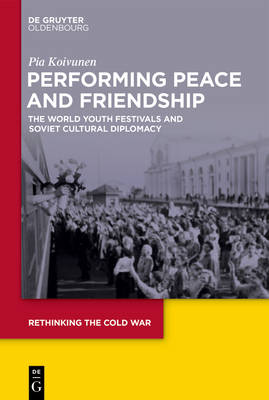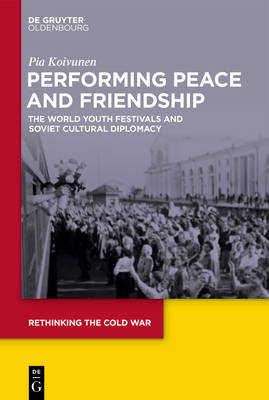
- Afhalen na 1 uur in een winkel met voorraad
- Gratis thuislevering in België vanaf € 30
- Ruim aanbod met 7 miljoen producten
- Afhalen na 1 uur in een winkel met voorraad
- Gratis thuislevering in België vanaf € 30
- Ruim aanbod met 7 miljoen producten
Zoeken
Performing Peace and Friendship
The World Youth Festivals and Soviet Cultural Diplomacy
Pia Koivunen
€ 188,45
+ 376 punten
Omschrijving
Performing Peace and Friendship tells the story of how the Soviet Union succeeded in utilizing the World Festival of Youth and Students in its cultural diplomacy from late Stalinism through the early Khrushchev period. Pia Koivunen discusses the evolution of the youth gathering into a Soviet cultural product starting from the first festival held in Prague in 1947 and ending with the Moscow 1957 gathering, the latter becoming one of the most frequently referred moments of Khrushchev's Thaw. By combining both institutional and grass-roots' perspectives, the book widens our understanding of what Soviet cultural diplomacy was in practice, re-evaluates the agency of young people and provides new insights into the Soviet role in the cultural Cold War. Koivunen argues that rather than simply being orchestrated rallies by the Kremlin bureaucrats, the World Youth Festivals also became significant spaces of transnational encounters for young people, who found ways to employ the event for overcoming the various restrictions and boundaries of the Cold War world.
Specificaties
Betrokkenen
- Auteur(s):
- Uitgeverij:
Inhoud
- Aantal bladzijden:
- 311
- Taal:
- Engels
- Reeks:
- Reeksnummer:
- nr. 9
Eigenschappen
- Productcode (EAN):
- 9783110758443
- Verschijningsdatum:
- 7/11/2022
- Uitvoering:
- Hardcover
- Formaat:
- Genaaid
- Afmetingen:
- 156 mm x 234 mm
- Gewicht:
- 657 g

Alleen bij Standaard Boekhandel
+ 376 punten op je klantenkaart van Standaard Boekhandel
Beoordelingen
We publiceren alleen reviews die voldoen aan de voorwaarden voor reviews. Bekijk onze voorwaarden voor reviews.








